Curriculum Includes
Kindergarten
Kindergarten: A Gentle Beginning Rooted in Wonder
In the Kindergarten years, children are gently welcomed into a world of rhythm, warmth, and play. Without the pressure of early academics, they build foundational capacities through imaginative play, sensory exploration, and storytelling. The classrooms radiate a quiet magic—handcrafted toys, natural textures, and the scent of fresh food prepared with care. These early years lay the bedrock for lifelong learning by nurturing curiosity, resilience, and social harmony.
There are many things that contribute to this unique setting, including the natural unfinished toys, the smell of freshly cut seasonal fruit or the way the teachers move about the room doing purposeful work.
There is also a deeper level of social, emotional and academic learning in our Kindergarten that is a pervasive undercurrent in the daily rhythm of our early childhood classrooms.
The children would never come home to report on what was “learned,” instead they tell tales of imaginative games, a puppet show story, time outside, or proudly report that they had helped roast corn or sweep the floor.
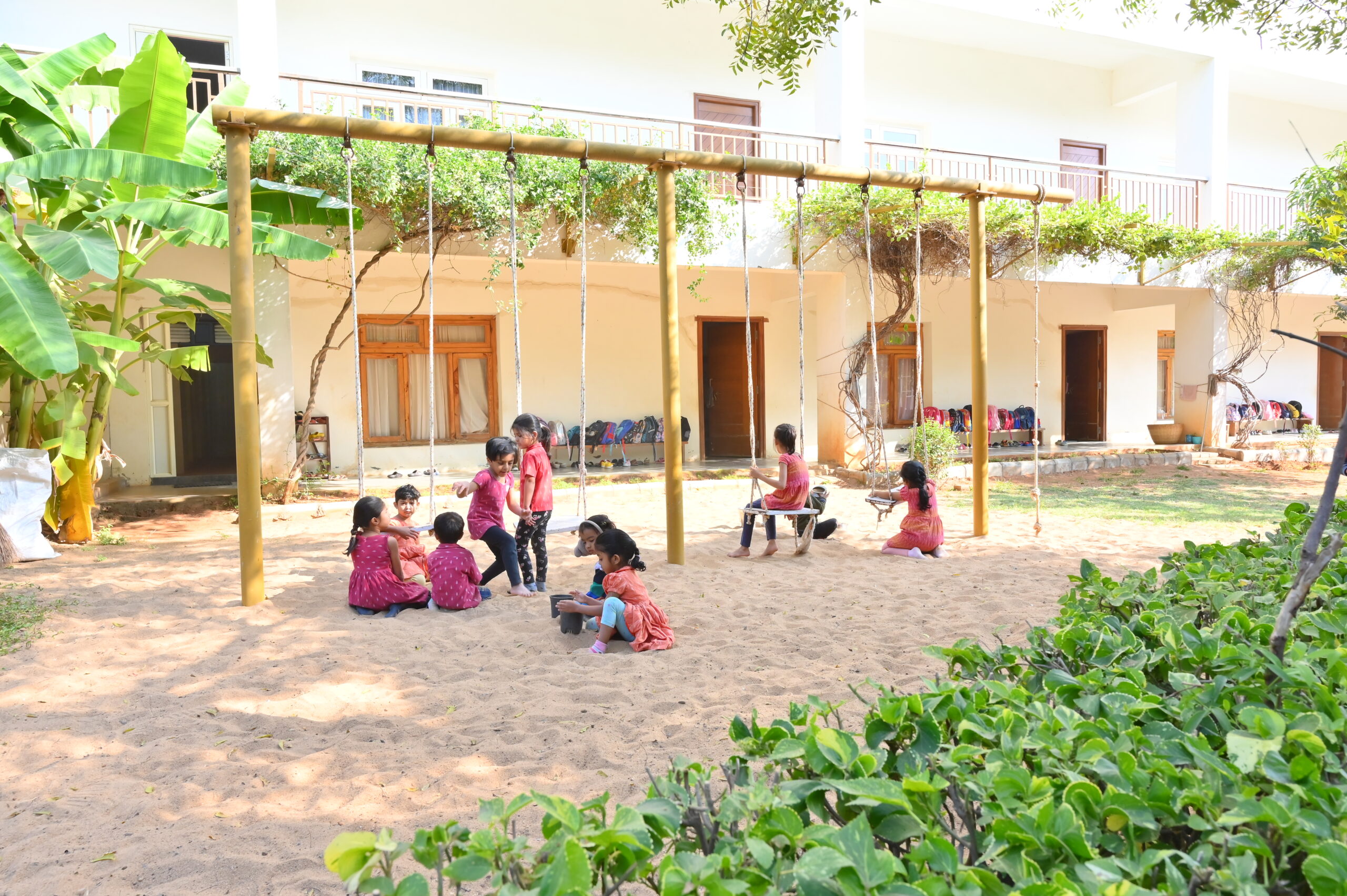
Play Based Learning
Learning in our Kindergartens is developmentally appropriate for children age 4-6 years. What is best for learning at this age is self-directed play. It promotes neural pathway development, hones social skills and peer navigation, advances gross and fine motor skills and strengthens motor planning and coordination.
Pre Academic Experiential Foundations
Through creative play, story time, artistic activities and outdoor exploration, the children actually work on language development, basic math, working with peers, listening skills, lengthening attention span and developing memory.
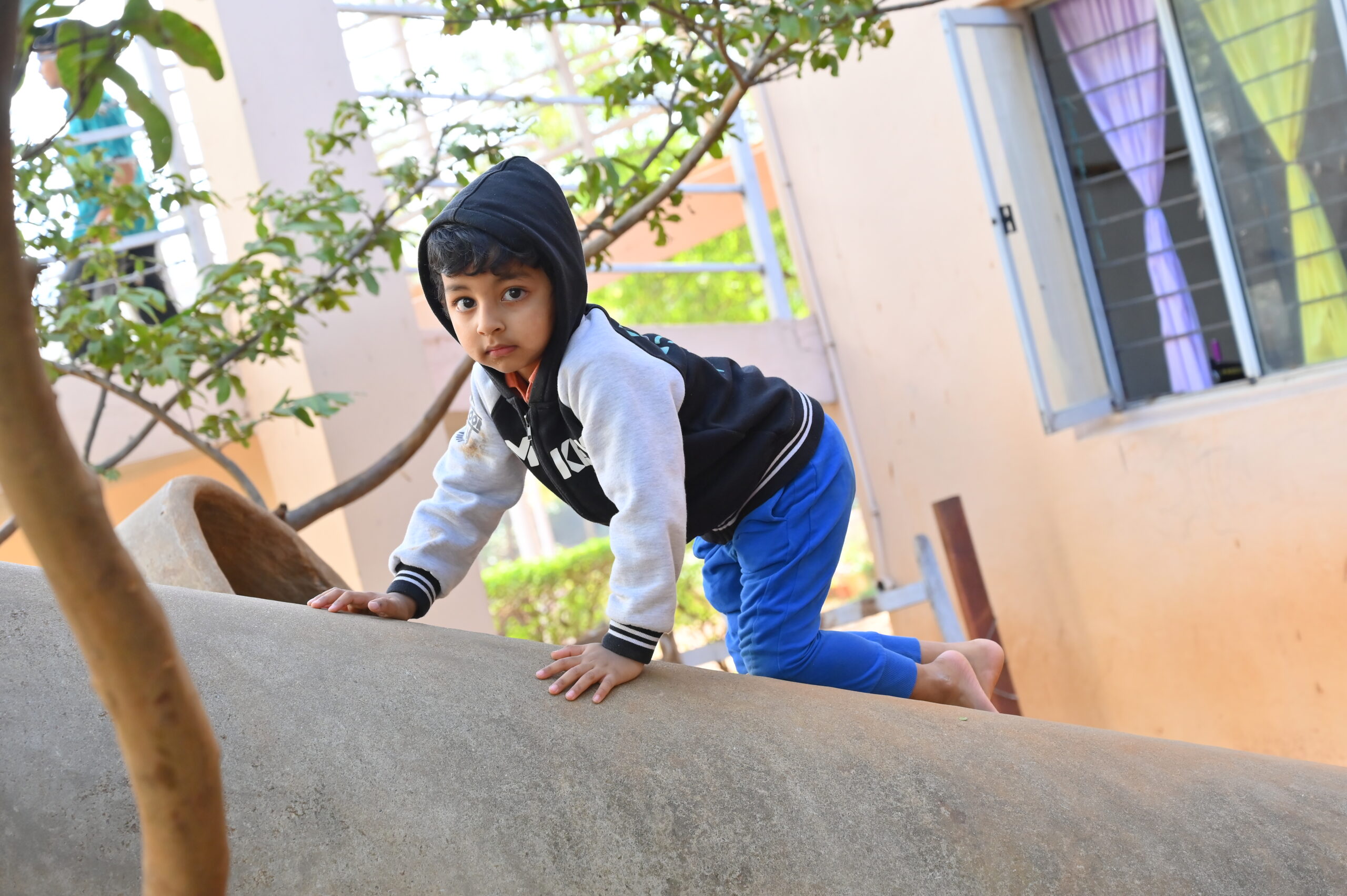
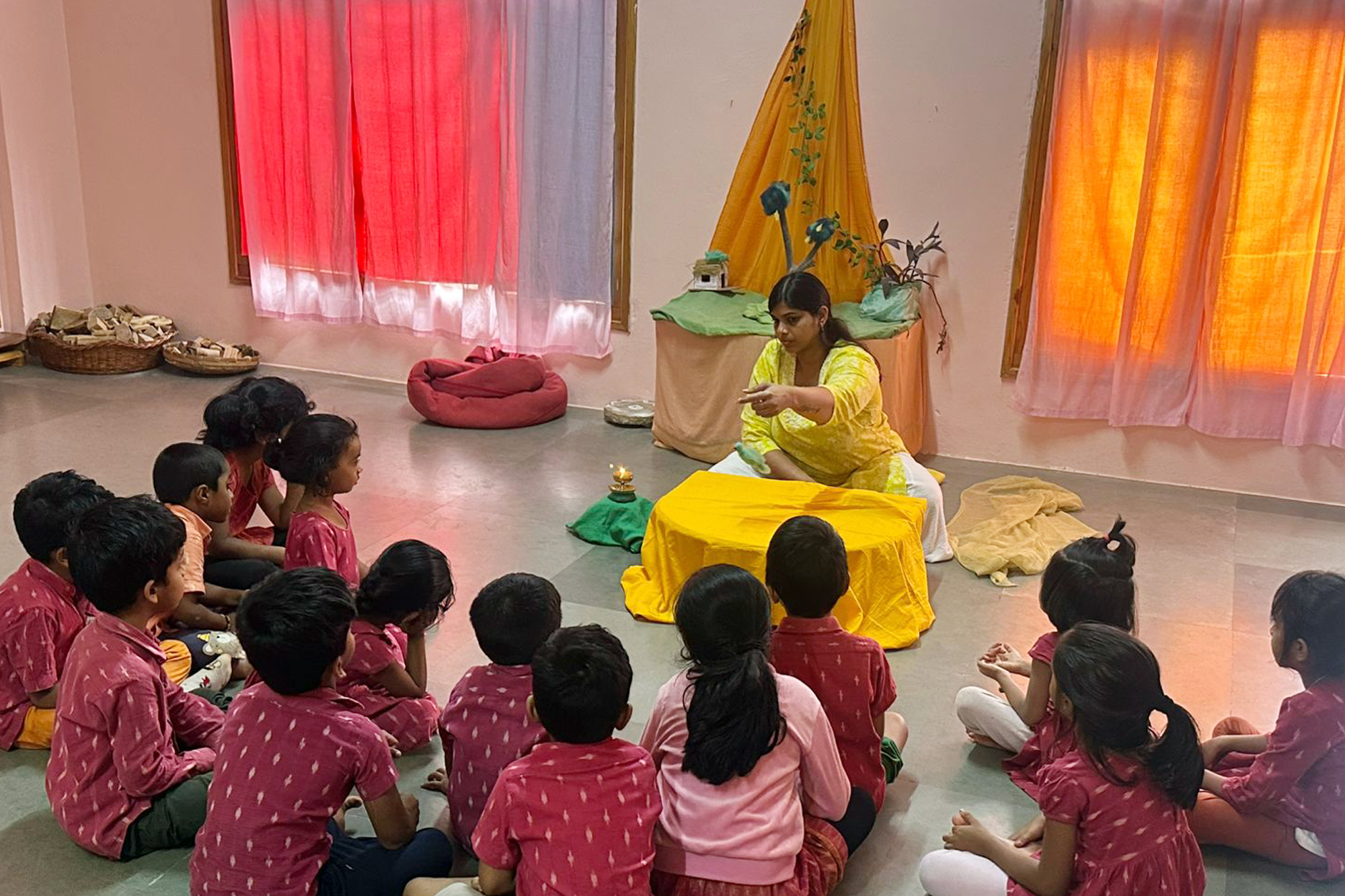
Story Time
Storytime in the Kindergartens is especially important in our approach to teaching reading, which develops a child’s comprehension skills before phonic skills. Listening, comprehending and imagining what is said in spoken word is key to future reading comprehension when words on a page must go beyond the stale script and develop into richness in their minds.
Children spend time with many different artistic activities as well including beeswax modeling, crayon drawings, and finger knitting. These activities develop fine motor skills, the ability to focus on a task.
Sensory Integration
The curriculum strives to educate the whole child, and that includes the senses and their relation to the body and movement – now called “sensory integration,” by the modern experts!
At Abhaya children are never told to stop from climbing trees or picking up stones as these activities are essential to developing sensory integration.
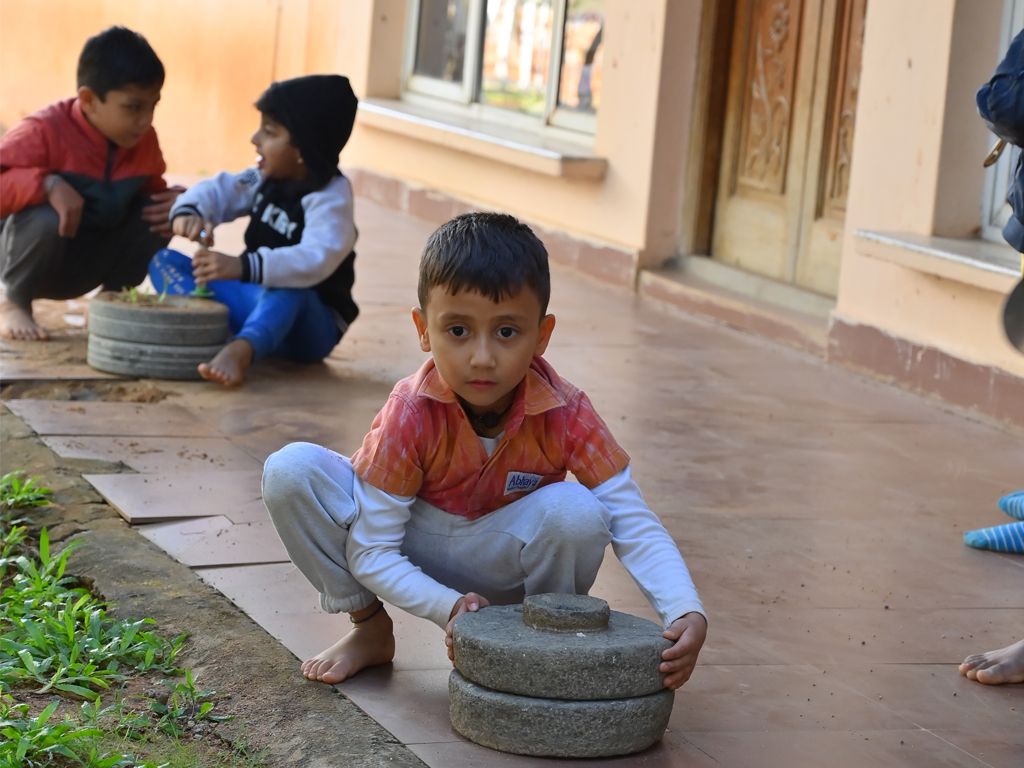
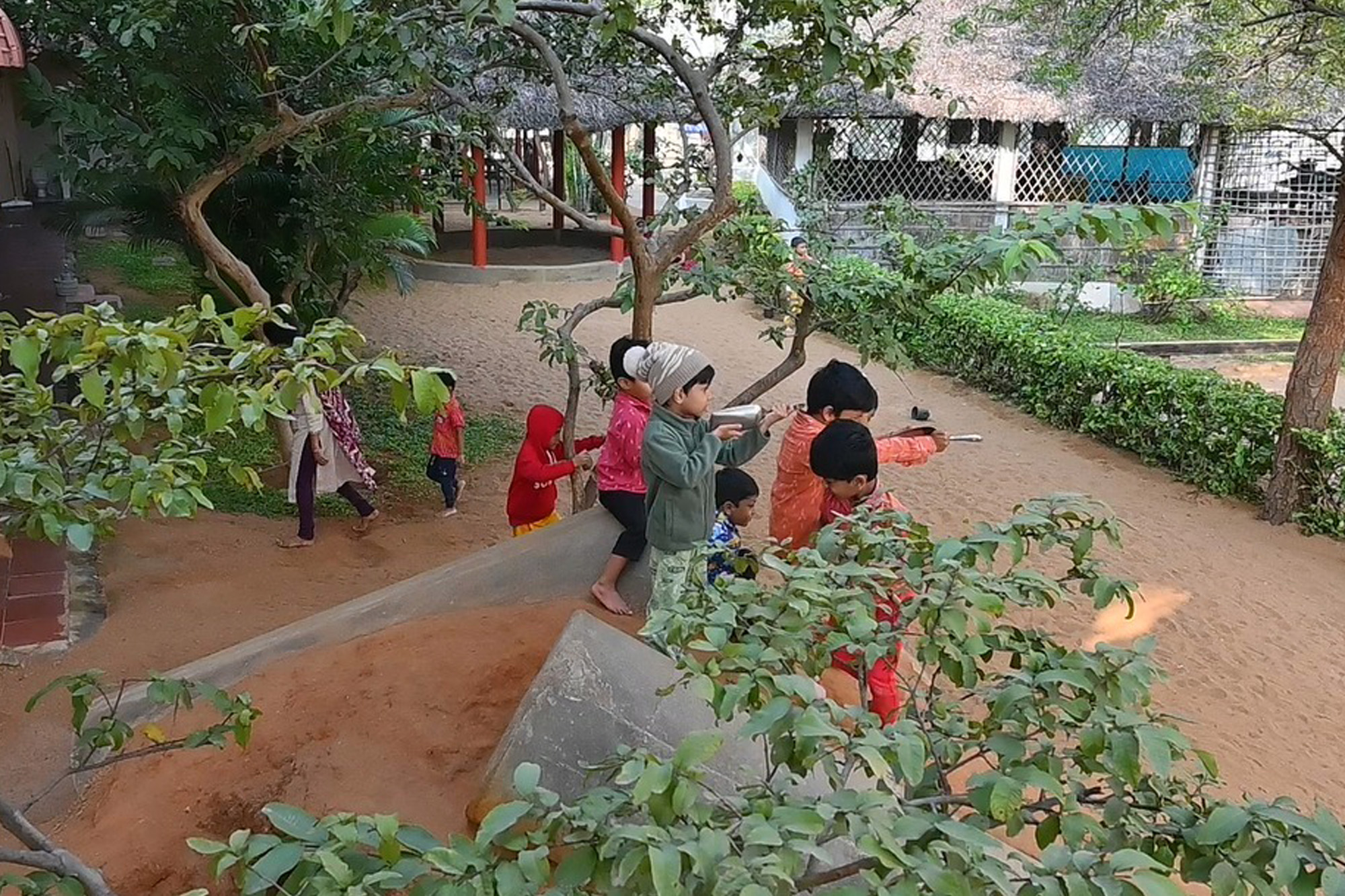
Nature-Based Learning
Children who immerse themselves in a natural and ever-changing environment simply have more opportunities to learn new things in new ways. Being outdoors provides expanded opportunity for physical exploration. Also, a hearty dose of curiosity and respect for nature also develops, laying a foundation for future scientific investigation!
